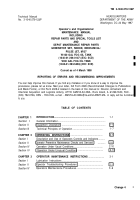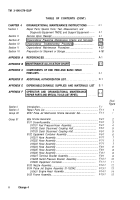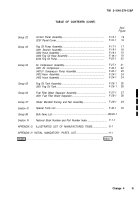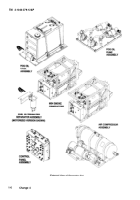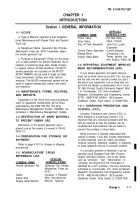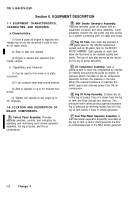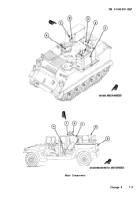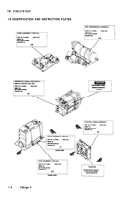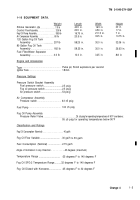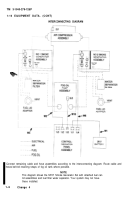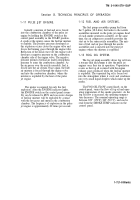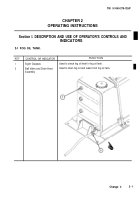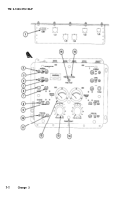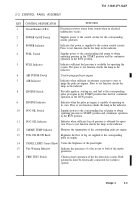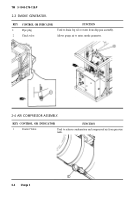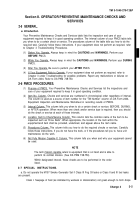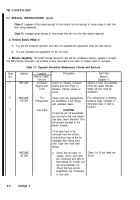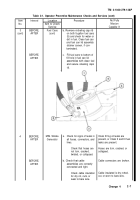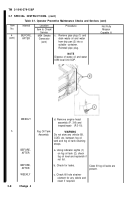TM-3-1040-279-12-P - Page 23 of 389
TM 3-1040-279-12&P
Section Ill. TECHNICAL PRINCIPLES OF OPERATION
1-11 PULSE JET ENGINE.
Initially a mixture of fuel and air is forced
into the combustion chamber of the pulse jet
engine by holding the ENGINE switch at the
control panel assembly in the START position.
A spark at the igniter causes the fuel/air mixture
to explode. The positive pressure developed as
this explosion occurs closes the engine valve and
forces the burning gases through the engine tube.
Reflection of the shock wave off the engine valve
develops a negative pressure on the combustion
chamber side of the engine valve. The negative
pressure permits external air under atmospheric
pressure to enter the combustion chamber. As
the air passes over the nozzle assembly, fuel is
forced into the air stream. Once again, the fuel/
air mixture is forced through the engine valve
and into the combustion chamber, where the
mixture is exploded by the heat of the pulse
jet engine.
The igniter is required for only the first
explosion. After the ENGINE indicator lights,
the ENGINE switch on the control panel assem-
bly can be released to RUN and successive charges
of fuel/air mixture will be exploded by contact
with the hot gases and metal in the combustion
chamber. The frequency of explosion in the pulse
jet engine is approximately 60 times per second.
1-12 FUEL AND AIR SYSTEMS.
The fuel pump assemblies pump fuel from
the 5-gallon (18.2-litre) fuel tanks to the nozzle
assemblies mounted on the pulse jet engines head
of each smoke generator assembly. At the same
time, the air compressor assembly provides the
start air to the same nozzle assemblies. The mix-
ture of fuel and air pass through the nozzle
assemblies and is injected into the pulse jet
engines where the mixture is exploded.
1-13 FOG OIL SYSTEM.
The fog oil pump assembly draws fog oil from
a storage tank and pumps it into the pulse jet
engines once they are in operation. Vaporization
occurs as the fog oil is mixed with the engine
exhaust gases produced when the fuel/air mixture
is exploded. The vaporized fog oil is forced out
into the atmosphere where it cools and condenses
into very small liquid droplets which make up the
smoke.
The FOG OIL FLOW control knob, on the
control panel, varies the flow of fog oil and oper-
ating temperature of the smoke generator. As the
fog oil flow is increased, the operating tempera-
ture decreases. The nominal operating range is
between 650° -950°F (343°-510°C), and can be
read from the SMOKE TEMP indicator on the
control panel.
1-7/(1-8 Blank)
Back to Top

